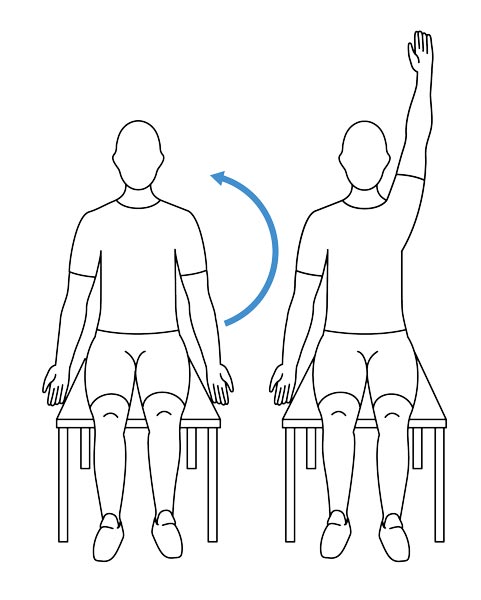


Common condition affecting 3 – 5% of the general population and 20% of the diabetic population.

The backhand volley involves slight internal rotation and abduction followed by slight external rotation and adduction of the shoulder. For a forehand volley, slight external rotation and slight adduction followed by abduction of the shoulder allow the player to complete the stroke.

Tennis volleys require smaller muscle and joint movements than either groundstrokes or serves. Proper preparation of the shoulder musculature is critical.
ABDUCTION OF SHOULDER PROFESSIONAL
At the professional level, male players reach speeds on the serve close to 140 miles per hour (225 km/h). After contact, deceleration has to occur through eccentric strength of the rotator cuff and related musculature. It has been reported that during the explosive internal rotation of the serve, shoulder rotation can reach speeds from 1,074 to 2,300 degrees per second. The muscles of the rotator cuff aid in power production during acceleration and provide eccentric strength to help slow down the arm after contact during the follow-through. The muscles of the rotator cuff play a vital role in stabilizing the humerus in the shoulder during all tennis movements, but they are critical during the acceleration and follow-through phases of the serve (figure 2.3). Internal rotation, shoulder extension, and adduction complete the follow-through. From the loading phase, scapular elevation, horizontal abduction, and shoulder extension move the arm toward contact. Horizontal abduction and external rotation occur during the backswing, with scapular retraction and depression into the loading phase. The tennis serve is a more complex sequence that uses a combination of horizontal and vertical movements. Groundstrokes require predominantly horizontal actions at the shoulder, using a combination of abduction and external rotation for the forehand backswing and backhand follow-through and a combination of abduction and internal rotation for the forehand forward swing and backhand backswing. In addition to the repetitive demands on the shoulder, tennis also requires explosive movement patterns and highly intensive maximal-effort concentric and eccentric muscular work. Typically, this makes it one of the most injured areas, especially in competitive tennis players. Tennis Strokes and Shoulder Movementįor a tennis player, the shoulder is one of the most used (and sometimes overused) areas of the body. This is an excerpt from Tennis Anatomy by Paul Roetert & Mark S.


 0 kommentar(er)
0 kommentar(er)
